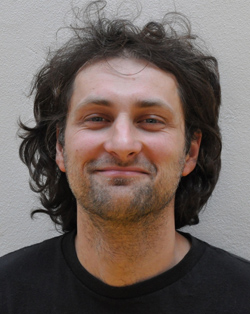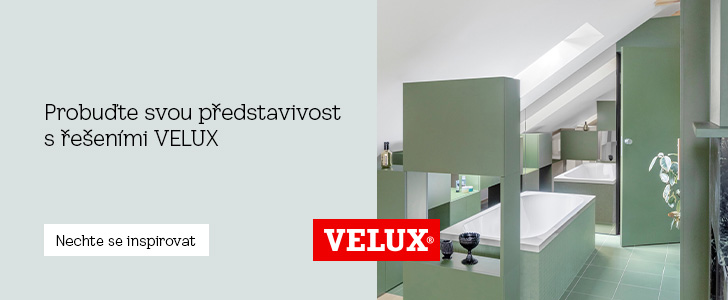
Architects: Prague should hold more competitions for important areas
 |
| Architect Petr Lešek |
The construction project of the PPF group is probably the closest to starting. In 2010, it organized a invited competition, and the jury selected the project by Radan Hubička. Last year, the project on the land between Verdunská and Jugoslávských partyzánů streets received approval from heritage authorities. As a representative of PPF informed ČTK today, the building meets all regulations for the given area and will, among other things, improve local civic amenities. However, the opposition at the Dejvice town hall is protesting against the construction.
Deputy mayor Tomáš Hudeček (TOP 09) agrees that more architectural competitions should be announced. According to him, the current situation is a result of a "botched" architectural competition for the new headquarters of the National Library, in which the design by Jan Kaplický won but was not implemented. "We are trying to change that; we are collaborating with the Chamber of Architects," Hudeček told ČTK. According to him, the problem is also that the city today does not have money for new projects.
Architect Lešek is part of the team of authors of the National Technical Library, which stands near the planned building. It has received several awards, including one for exemplary contemporary architecture in a historic environment, and its project originated from an open architectural competition with approximately 45 submissions. Lešek is also the chairperson of the working group of the Czech Chamber of Architects, which oversees architectural competitions.
He believes that developers are entering an environment without clear rules; local governments generally do not have prepared regulations for the development of important areas, and uncertainty can contribute to corruption. "Prague 6 is capable of this, it announced a competition for the development of part of Ruzyně with residential buildings three years ago. It brought clear recommendations, but they have not yet been incorporated into the regulatory plan," he stated.
Prizes and awards in this competition amounted to 730,000 crowns - this may be one of the reasons why town halls do not commission similar competitions, according to Lešek. "But they are saving in the wrong place; they hastily choose the best designer without any project preparation, including a quality debate with the public, and when problems arise, they claim that the project cannot be stopped once it has consumed so much money. However, the project decides on much higher construction costs, not to mention feasibility and quality," reminding, for instance, of the pool construction in Písek, which people rejected in a recent referendum. Similarly, Plzeň residents rejected the project for a large department store in the center, and residents of Prague 7 halted the construction of a new town hall.
On the other hand, he looks forward to the results of the current open architectural competition for the new shape of Štvanice Island announced by the magistrate. According to Lešek, only a few competitions for important areas have been held in the last 20 years. In Prague, it was still in the 90s at Pankrác, but the political representation did not utilize its outcome. The architect points out that in recent times, smaller towns have shown more interest in architectural competitions. "It is likely that in a smaller municipality, an investment in quality is clearer and easier to justify, and the relationship to municipal property is more responsible and evident," he believes.
According to Lešek, Prague has partially wasted time by not clarifying the development strategy for some large and unused spaces, such as former train stations. "Developers mainly seek quick profits," he says. "Now, due to the crisis, they are limiting investments; it would be good to prepare for the moment when they again want to invest intensively," he reminds.
The city of Prague has a strategic plan, but it is merely a text that is not worked with too much. Lešek states that other European cities have it even in visual form - striving for comprehensibility for residents. The Prague zoning plan, according to him, still uses an outdated methodology based on the ideas of the 1950s, where land functions are color-coded without direct connection to the strategic plan. However, it is not clear what vision the regional development is heading towards.
Prague is currently preparing a metropolitan plan, which should address the aforementioned shortcomings. One of its advantages is supposed to be, according to the Prague leadership, its general comprehensibility and setting frameworks for development, which will also lead to limiting space for corruption.
Architectural competitions in Prague announced according to the rules of the Czech Chamber of Architects from 1993 to 2012:
1993 - New building of the MÚ Prague - Kralovice
1994 - Study of the regeneration of the school building and design for the use of the school land in Prague - Jižní město
1995 - Chvalský château, Prague - Horní Počernice
1995 - Urban furniture for Prague (Column and clock)
1996 - Four Seasons Hotel Prague, Alšovo nábřeží Prague 1
1997 - Completion of the Pankrácké pláně center
1997 - Scandinavian center, Karlovo náměstí, Prague 2
1997 - Proposal for a suitable location for the statue of Winston Churchill and the ideational solution of the space of Winston Churchill Square in Prague 3
1998 - Adaptation and extension of the Žižkov Theatre of Jára Cimrman, Prague 3
1999 - Proposal for architectural and artistic rendition of the exhaust object on Paví vrch for the Mrázovka tunnel in Prague 5
1999 - Solution for the footbridge Holešovice-Karlín, Prague 7
2000 - Organization and use of the area of Vítkov Hill, Prague 3
2001 - Adjustment of Jan Palach Square and Alšovo nábřeží in Prague 1, including the final placement of the Antonín Dvořák memorial
2002 - Artistic design and urban planning solution of the surroundings of the memorial to Czechoslovak foreign soldiers killed on the battlefields of World War II at Vítězné náměstí in Prague 6
2003 - Proposal for a monument to the second resistance at Klárov in Prague 1
2004 - Renewal of the park and lookout tower on Petřín and part of the Růžový sad
2005 - Proposal for adjustments to Wenceslas Square, Prague 1
2005 - Reconstruction and extension of the building of the municipal office of the city district of Prague - Dolní Měcholupy
2005 - Central part of the royal game preserve in Prague 7
2006 - Havlíčkovy sady Prague 2
2006 - Bridge over the Vltava
2007 - Revitalization of object no. 1751/II and Bastion XXXI of the New Town fortifications, Prague 2
2008 - Adjustments to Karlovo náměstí, Prague 2
2009 - Revitalization of the buildings in Mariánské náměstí in Prague
2009 - Sunshine City in Prague Zbraslav
The English translation is powered by AI tool. Switch to Czech to view the original text source.











